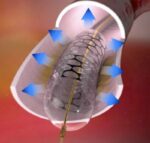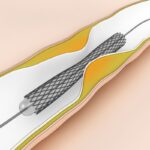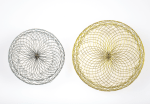The cessation of dual antiplatelet treatment increased the risk of post coronary intervention adverse events. It is unclear whether the risk varies through time or if it depends on the reason for the interruption or both. The PARIS (patterns of non-adherence to anti-platelet regimens in stented patients) register is a prospective, observational study in patients...
Risks and benefits of extending dual antiplatelet therapy in patients with and without MI
Original title: Benefits and Risks of Extended Duration Dual Antiplatelet Therapy after PCI in Patients With and Without Acute Myocardial Infarction. The DAPT Study. Reference: Robert W. Yeh et al. J Am Coll Cardiol. 2015, online before print. The risks and benefits of prolonged antiplatelet therapy after PCI could be different in patients presenting with AMI compared to...
Zotarolimus eluting stent with one month of dual antiplatelet therapy
Original title: Zotarolimus-Eluting Versus Bare-Metal Stents in Uncertain Drug-Eluting Stent Candidates. Reference: Marco Valgimigli et al. J Am Coll Cardiol. 2015;65(8):805-815. The use of drug eluting stents (DES) in patients at high risk of bleeding or thrombosis has not been studied prospectively. Data on patients at high risk of bleeding and low restenosis are limited. This study compared...
Never ending controversy over the duration of post DES dual antiplatelet therapy
Original title: Second Generation Drug-Eluting Stents Implantation Followed by Six Versus Twelve-Month – Dual Antiplatelet Therapy- The SECURITY Randomized Clinical Trial. Reference: Antonio Colombo et al. J Am CollCardiol. 2014 Nov 18;64(20):2086-97. The optimal duration of dual antiplatelet therapy after second-generation DES implantation is still debated and apparently will remain controversial for some time. The aim of this...
Risks and benefits of Dual Antiplatelet beyond the year of a drug-eluting stent
Original title: Twelve or 30 Months of Dual Antiplatelet Therapy after Drug-Eluting Stents. Reference: Laura Mauri et al. N Engl J Med 2014;371:2155-66. Dual antiplatelet therapy is recommended after a drug-eluting stent to prevent thrombotic complications. The clinical benefit of this scheme it is not clear beyond one year. Patients were registered to receive a...
3 to 6 months of dual antiplatelet after DES reduced bleeding and did not raise mortality or infarction.
Original title: Meta-analysis of randomized clinical trials comparing short term -vs- long term dual antiplatelet therapy following drug eluting stents. Reference: El-Hayek G et al. Am J Cardiol. 2014; Epub ahead of print. This meta-analysis examined the data of four randomized and controlled studies (EXCELLENT, PRODIGY, RESET y OPTIMIZE) including 8157 patients receiving sirolimus, paclitaxel, everolimus or zotarolimus...
At least one month of antiplatelet seems sufficient after a zotarolimus -eluting stent
Original title: Lack of association between dual antiplatelet therapy use and stent thrombosis between 1 and 12 months following Resolute zotarolimus-eluting stent implantation. Reference: Silber S, Kirtane AJ, Belardi JA, et al. Eur Heart J. 2014; Epub ahead of print. Dual antiplatelet aggregation optimal time after implantation of a new generation drug-eluting stent (DES) is still discussed. This...
Six Months Sufficient for Dual Antiplatelet Therapy
Reference: Kandzari DE, Barrer CS, Leon MB, et al. Dual antiplatelet therapy duration and clinical outcomes following treatment with zotarolimus-eluting stents. JACC Cardiovasc Interv 2011; 4: 1119-28.2011; 4: 1119-28. Patients treated with zotarolimus-eluting stents (ZES) suffer no excess late ischemic events if they take dual antiplatelet therapy for 6 months instead of 12 months or longer,...
High Gradients After Valve-in-Valve
One of the limitations of aortic bioprostheses is their durability. When these devices fail, percutaneous valve implantation is a valid strategy. However, it has been shown that there may be high gradients involved. This gradient increase has been associated with worse outcomes and higher mortality rates, as observed in the PARTNER 2 study at 12 months....
Evolution of Leak in Left Atrial Appendage Closure
Atrial fibrillation is common in elderly people and is associated with a higher risk of ischemic stroke. Left atrial appendage occlusion (LAAO) is a valid strategy, especially in patients at high risk of bleeding. The presence of peridevice leak (PDL) has been linked to stroke, although some analyses, such as the PROTEC-AF Study, suggest that...








